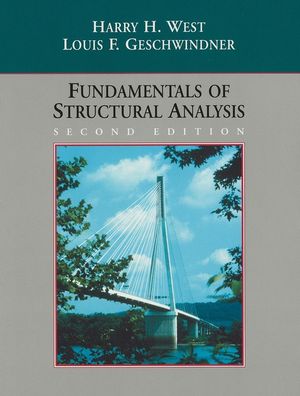|
Textbook
Fundamentals of Structural Analysis, 2nd EditionISBN: 978-0-471-35556-4
Paperback
600 pages
February 2002, ©2002
 This is a Print-on-Demand title. It will be printed specifically to fill your order. Please allow an additional 10-15 days delivery time. The book is not returnable.
|
||||||
- Presentation of the underlying theory is developed in a clear and simple manner. It is substantive, however does not engage in unnecessary mathematical sophistication. Students are not offered recipes to follow without an understanding of the underlying theory. They are taught to use the analytic tools presented to them with confidence and with a full knowledge of their limitations.
- The content offers a comprehensive treatment of structural theory ranging from the classical methods to modern matrix methods. It is important for students to see the entire range of methods, both classical and modern, so as to place the entire sphere of structural analysis in proper perspective. Classical methods evolved from the era of hand calculations and center on specificity. These methods allow both student and instructor to focus on the solutions for certain structure types and their corresponding modes of response. Modern matrix methods are computer orientated and center on generality. These approaches find applications in the solutions for large, complicated systems. However, a thorough grounding in classical methods enhances the understanding of the more comprehensive modern computer approaches and provides the ability to check the reasonableness of computer results. A text that weaves together the classical and modern methods, as this text does, helps students see the central thread that is foundational in all of structural analysis.
- The text is richly textured with photographs and a blend of graphical illustrations. Some photos are intended to provide examples of structure types while others are photos of monumental structures to provide motivation and to show the splendor of structural engineering. The illustrations range from realistic to idealized, simple line drawings.
- There is a broad spectrum of example problems that demonstrate the application of theory to practical problem solving in structural engineering. There is a correspondingly rich array of problems at the end of each chapter that the instructor can use for homework assignments. These range in difficulty from the very simple-type problems (to reinforce basic concepts) to difficult and challenging problems (to test the students ability to extrapolate beyond the obvious).



